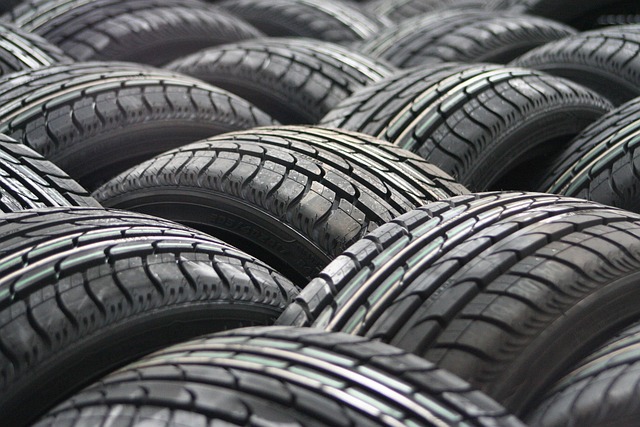Registering a car in California is a straightforward process, but it requires understanding specific rules and gathering essential documents. This step-by-step guide will walk you through the entire procedure, ensuring a smooth experience. From meeting the necessary requirements to performing a DMV VIN verification, we’ll cover everything you need to know. By following these simple steps, you’ll be on your way to becoming a California car owner in no time.
- Understand Requirements for Car Registration in California
- Gather Necessary Documents for DMV Visit
- Perform Vehicle Identification Number (VIN) Verification
- Complete Application and Submit for Processing
- Receive Registration and License Plate Information
Understand Requirements for Car Registration in California

Before registering your car in California, it’s crucial to understand the specific requirements set by the Department of Motor Vehicles (DMV). The process involves several steps, including a thorough vehicle inspection to ensure it meets safety and environmental standards. One key aspect is the DMV’s requirement for Vehicle Identification Number (VIN) verification, which serves as a critical step in the registration procedure.
This verification ensures that your car’s VIN is accurate and matches the make, model, and year of the vehicle you intend to register. In California, this process can be completed through various methods, including a traditional inspection at a DMV office or even a mobile VIN verification service, where a specialist comes to your location to conduct the check using advanced technology. The latter option is particularly beneficial for folks with busy schedules, as it offers convenience and saves time by eliminating the need to visit a DMV branch.
Gather Necessary Documents for DMV Visit

Before visiting the DMV, ensure you have all the required documents for a smooth car registration process. The key to a successful trip is being prepared with accurate and up-to-date information. Gather your vehicle’s registration certificate from its previous owner or dealer, as it contains vital details like make, model, and year. Additionally, bring along the title (if applicable), proof of insurance, and a valid driver’s license.
For a faster and more convenient experience, consider using a mobile VIN verifier. This tool allows you to perform a DMV VIN verification online or on-the-go, checking your car’s history in real time. Having your vehicle’s information readily available can save you time and effort, especially if there are any discrepancies or issues that need clarification before heading to the DMV.
Perform Vehicle Identification Number (VIN) Verification

Before registering your vehicle in California, performing a Vehicle Identification Number (VIN) verification is a crucial step. This process ensures that the car’s history and specifications match the information provided by the manufacturer. You can complete this task through a mobile vin verifier or arrange for a vin inspection at a certified location. The California Department of Motor Vehicles (DMV) recommends using official tools to ensure accuracy, which helps in avoiding potential issues during the registration process.
During VIN verification, you’ll need to cross-reference details like the vehicle’s make, model, year, and unique VIN with reliable databases. This step is essential, as it safeguards against fraud and ensures that your car meets all necessary standards. A mobile vin inspection can be convenient, offering on-site services for your convenience, while a traditional vin inspection at a specialized facility provides an additional layer of verification.
Complete Application and Submit for Processing

After gathering all the necessary documents and ensuring your vehicle meets California’s requirements, it’s time to complete the Application for Title and Registration (form DV302). Fill out this form accurately, double-checking all the details, including your personal information, vehicle specifications, and ensuring the DMV VIN verification is correct. This process involves a thorough inspection of your vehicle’s unique Vehicle Identification Number (VIN), so be prepared with any required documentation related to ownership history or repairs.
Submit the completed application along with the necessary fees and supporting documents to a California DMV office. You can also opt for a mobile vin verification or mobile vin inspection service, which allows you to have your vehicle’s VIN checked remotely, providing an additional convenient option for a hassle-free registration process.
Receive Registration and License Plate Information

After completing the registration application, it’s time to receive your vehicle’s registration and license plate information. This crucial step involves verifying the car’s unique Vehicle Identification Number (VIN) through a process known as DMV VIN verification. This ensures that your car meets all necessary safety and legal standards. You can conduct this vin inspection either at a DMV office or, for added convenience, opt for a mobile vin verification service.
The process is straightforward; you’ll need to provide the DMV with essential documents, including proof of ownership and identification. They will then cross-reference the VIN with their records to confirm the vehicle’s details. Upon successful verification, they will issue your registration paperwork, along with unique license plates tailored to your car’s make, model, and year. This information ensures that your vehicle is legally registered and ready for California’s roads.
Registering a car in California involves understanding key requirements, gathering essential documents, performing a DMV VIN verification, completing an application, and waiting for registration and license plate information. By adhering to these steps, you’ll ensure a smooth process and officially hit the road with your new vehicle. Remember, accurate documentation and timely submission are crucial for a successful registration.
